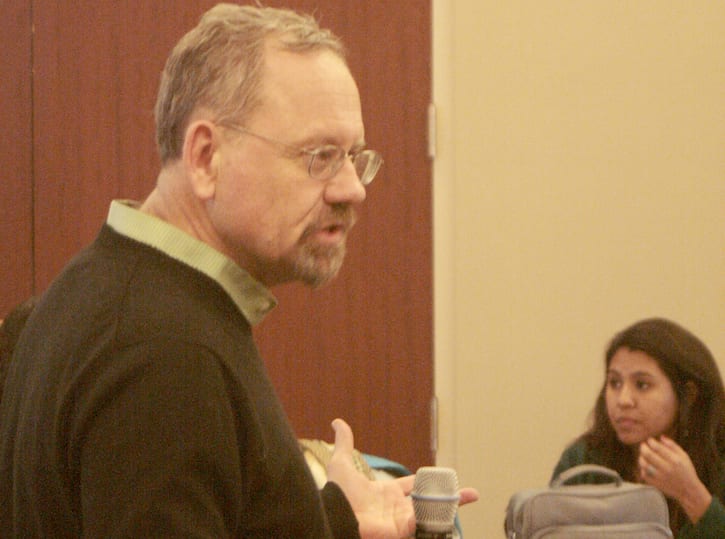
For many, Black History Month is now just one of those months, when Americans remember the history of the struggle for the Civil Rights Movement and racial equality. Names such as Martin Luther King, Jr., Rosa Parks and many others come into light after staying in the shadows for the previous 11 months.
But at St. Olaf’s celebration of Black History Month in February, there was more to the commemoration than just remembrance. There was also the legacy. There was also the question: “What now?”
In accordance with the commemorations, the Flaten Art Museum in Dittmann Center is displaying a photography exhibition titled “Selma to Montgomery: Marching Along The Voting Rights Trail.” On display from Feb. 27 to April 12, the 45 photographs by Stephen Somerstein document African-Americans in their struggle for social justice through the 54-mile march from Selma to the state capitol in Montgomery, Ala. Through the exhibition, Oles get a glimpse of how the march has become a symbol of perseverance and hope and also the inspiration to keep moving forward toward an America that is truly united in all its backgrounds and differences.
Another event held last month in commemoration was the discussion dinner event on Wednesday, Feb. 25. At “Selma, Alabama Today,” St. Olaf Professor of History Michael Fitzgerald retold the story of bringing several St. Olaf students to Selma, Ala. for Interim 2015 to review the museums, monuments and how the Alabamians, particulary those who lived within the historical cities of the Civil Rights Movement period Selma, Birmingham and Montgomery perceived the events today.
At first glimpse, many Americans “Northerners” might think that since the late 60s “turmoil,” “domestic dispute” or “insurrection” is a very dark stain within Alabama’s history, that the state is putting in more effort to curb the remembrance of those times by building fewer memorials and museums and doing less to educate youth on the Civil Rights Movement. Yet, as Fitzgerald and the students who were in his class speak of it, the contrary is true. Memorials, museums and plaques decorated the cities from street to street. Many who participated in the movement in the 1960s have also tried to nurture the importance of the movements in the minds of the young generation, for therein lies the challenge for the future.
Based on what the students observed, and through interviews with many advocates and people who lived through the movement period, today’s issue is that young generations simply do not know at all or know very little about what happened during those turbulent times. In addition, there is the difference between what people who lived in the historical cities perceived as the important moments within the state’s history that have to be preserved and retold and what institutions decide to retell.
Nevertheless, at the end of his talk, Fitzgerald reinstated the importance for young generations to continue the work on building a better future and reliving the legacy, not only of the leaders of the Civil Rights Movements, but also of those from St. Olaf who put themselves on the line for the sake of others. For example, James Reeb ’50 sacrificed his own life for the freedom of others, along with fellow Oles who went down to Alabama in the summer of 1965 to help in education of the youths.
Both the exhibition and the dinner discussion serve as an opening for the 50th anniversary of the Selma-Montgomery march, but also in a greater context serves as a new source of contemplation for all Oles. With the racial tensions and disparities that still plague the country, the question remains: what can we do for the better, now and tomorrow, for the sake of others?
pattin1@stolaf.edu
Photo Credit: MADISON VANG/MANITOU MESSENGER

